
All categories
Lead Generation_
The lead qualification process: Your essential guide (2023)
Qualifying leads helps you increase conversions. This essential guide covers everything you need to know about the lead qualification process to convert more leads into customers.
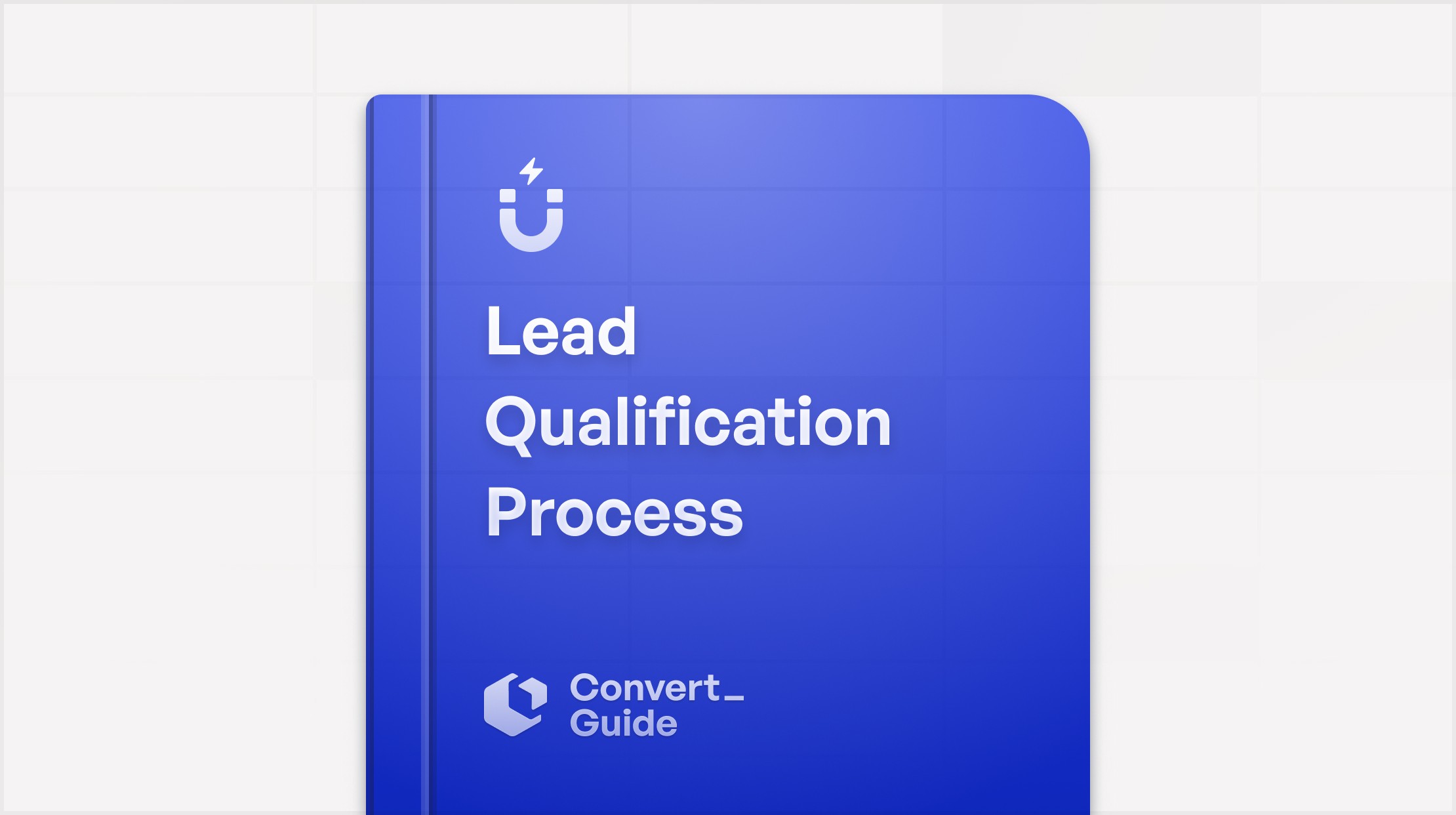

Lead Generation_
The lead qualification process: Your essential guide (2023)
Qualifying leads helps you increase conversions. This essential guide covers everything you need to know about the lead qualification process to convert more leads into customers.


Lead Generation_
The lead qualification process: Your essential guide (2023)
Qualifying leads helps you increase conversions. This essential guide covers everything you need to know about the lead qualification process to convert more leads into customers.

Lead qualification plays a crucial role in the success and efficiency of your lead generation efforts. You need to assess and categorize leads to determine a prospect's level of interest and readiness to buy.
Qualifying leads helps you boost your conversion rates. Because high-quality leads have already shown interest in your business they are easier to convert into customers.
Key Points:
A lead is a potential customer interested in your business.
Lead generation attracts potential customers to your business.
You can generate leads through inbound and outbound methods.
Lead generation involves getting your business noticed, prompting people to click a call to action, taking them to the next stage of the customer journey, and persuading them to exchange their contact details for a resource.
Lead generation fuels sales, increases visibility, helps you maximize ROI, creates audience insights, and builds credibility.
The lead qualification process helps you divide leads into qualified and disqualified.
You categorize leads by asking qualifying questions.
Lead qualification frameworks help you to qualify leads and increase conversions.
We cover these points in more detail throughout this article.
Let's dive into your guide to the lead qualification process in 2023.
What is a lead?
In a nutshell, a lead is a potential customer who shows interest in your product. People providing contact information such as name, email address, or phone number indicate this interest.
But a lead goes beyond just contact information. It's an opportunity for you to connect with a potential customer and nurture the relationship into a sale.
A lead is like a seed that has the potential to grow into a fruitful business relationship.
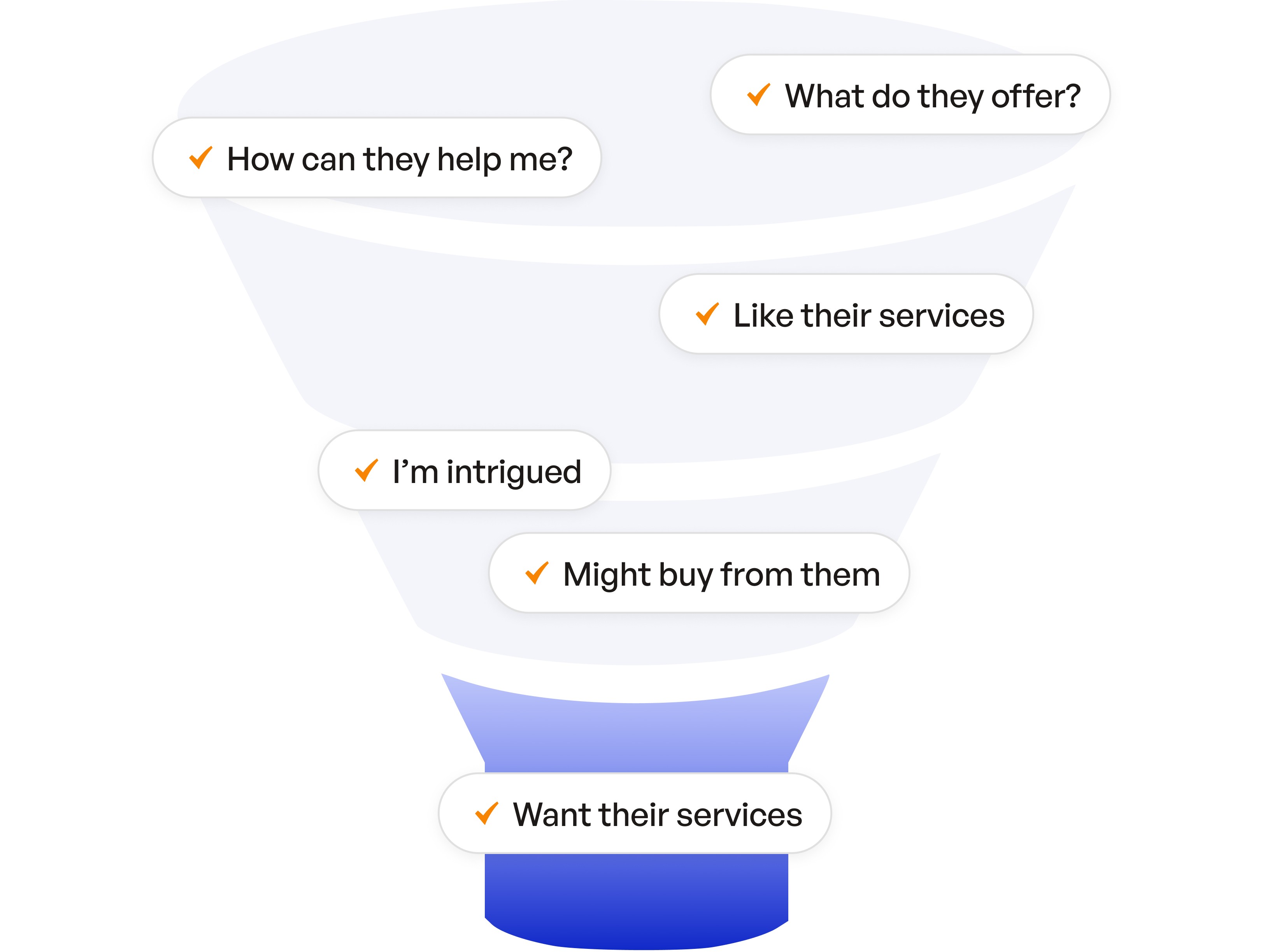
When a prospect expresses interest in your service, they have a problem they think you can solve. The initial expression of interest is the first step in the customer journey, and you must capitalize on this opportunity.
You can engage in the lead qualification processes once you gather leads. It determines the level of interest and the likelihood of conversion.
That involves assessing the lead's demographics, behavior, and engagement with your business. Understanding this information lets you tailor your approach to increase the chances of conversion.
Not all leads are created equal, though. Some will be more qualified and ready to buy. You must nurture and educate others before they're ready to convert. Lead qualification helps you prioritize your efforts and allocate resources effectively.
Leads have various sources, including:
Referrals
Website inquiries
Social media interactions
Each source may require a different approach and level of engagement.
Referral leads have a higher level of trust and interest in your business. Those visiting your website through a search engine will initially have less trust.
What is lead generation?
Lead generation is identifying and attracting potential customers for your business. It involves various marketing tactics and strategies to capture attention and interest in your products.
Lead generation is an essential aspect of any successful marketing campaign. With the increasing reliance on online platforms, you need innovative ways to generate leads and convert them into paying customers.
Lead generation can be divided into two types: Inbound and outbound.
Inbound leads
Inbound lead generation is a powerful strategy for attracting potential customers. This customer-centric approach focuses on understanding the needs and pain points of the target audience. It's effective because you connect with potential customers actively seeking solutions.
Content marketing is one of the most common ways to generate inbound leads. You can attract prospects and establish yourself as an industry expert through valuable and relevant content.
This can include:
Social media posts
Blog articles
SEO
Social media
It's no secret that social media is a powerful tool for lead generation. Creating valuable content on platforms like Facebook, Instagram, Twitter, and LinkedIn builds brand awareness, fosters relationships, and drives traffic to your website.
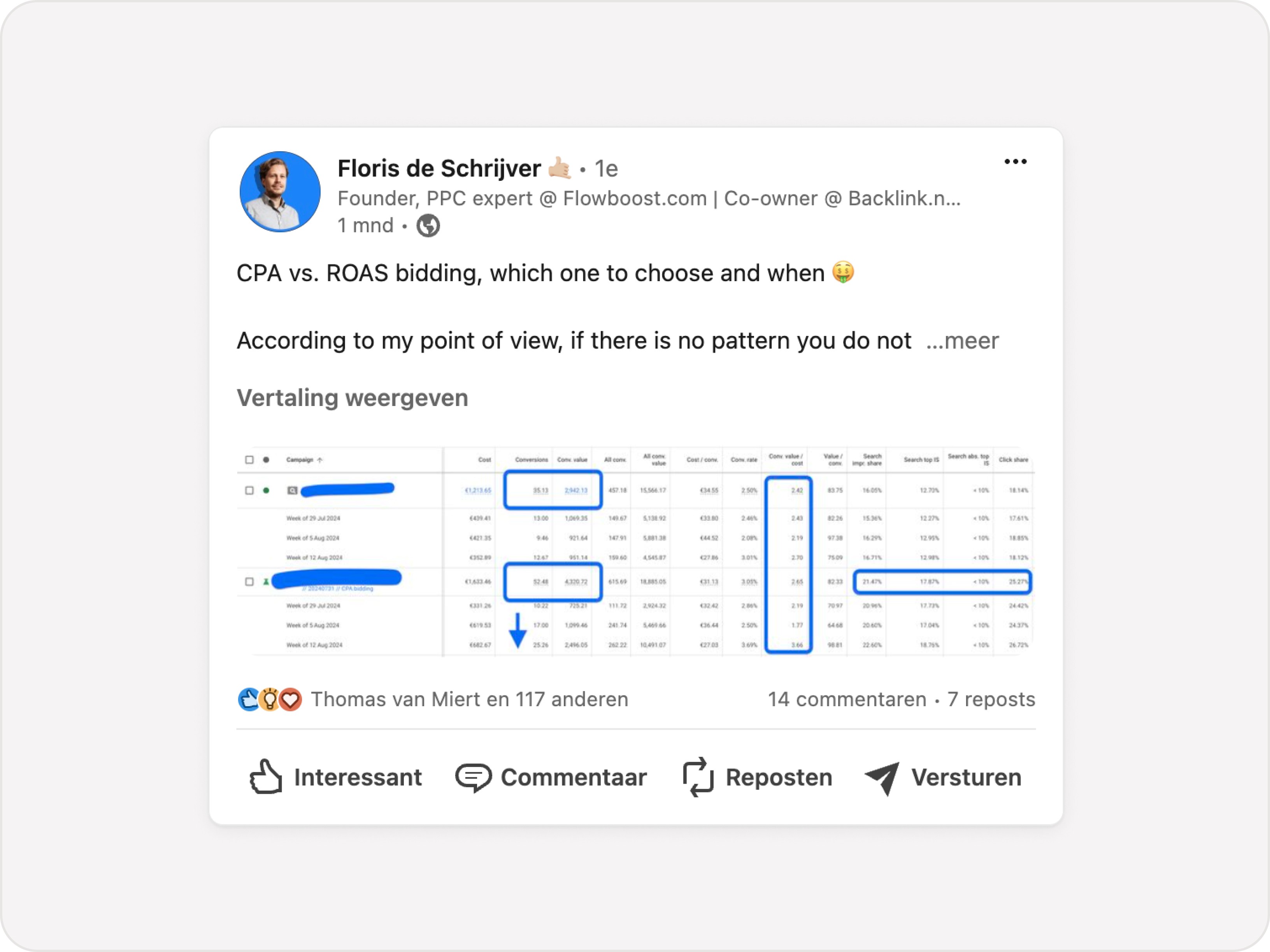
Blogging
Another tactic for inbound lead generation is blogging. You build industry authority by publishing valuable articles. This attracts the attention of your target audience and establishes credibility.
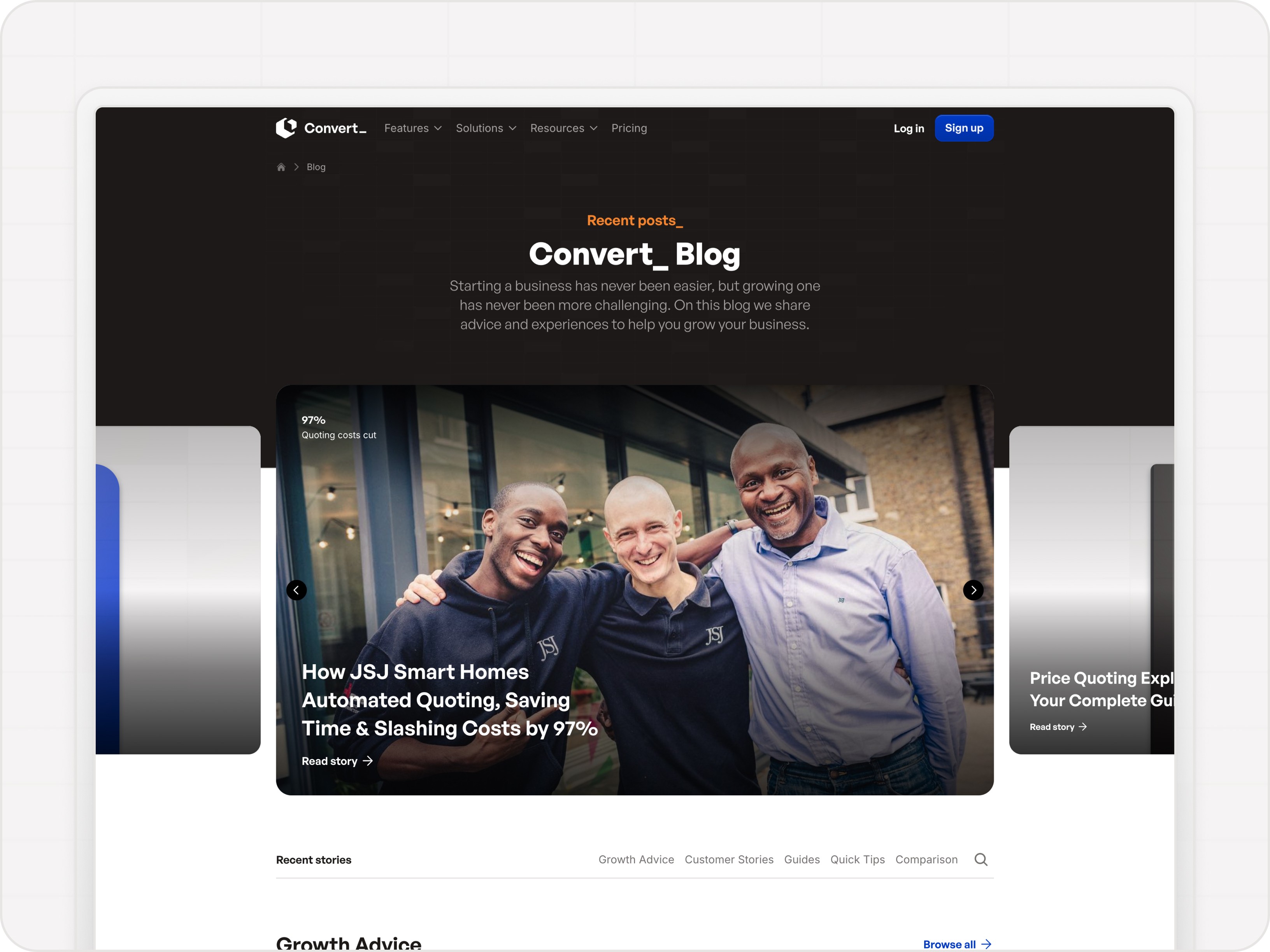
SEO
Search engine optimization (SEO) is another effective strategy. Optimizing your website for search engines increases your visibility and attracts organic traffic. Leads generated organically are more likely to convert to customers.
Inbound lead generation is a customer-centric strategy. You connect with prospects, address their pain points, and ultimately generate leads through social media, blogging, and SEO. This approach often leads to long-term customer relationships.
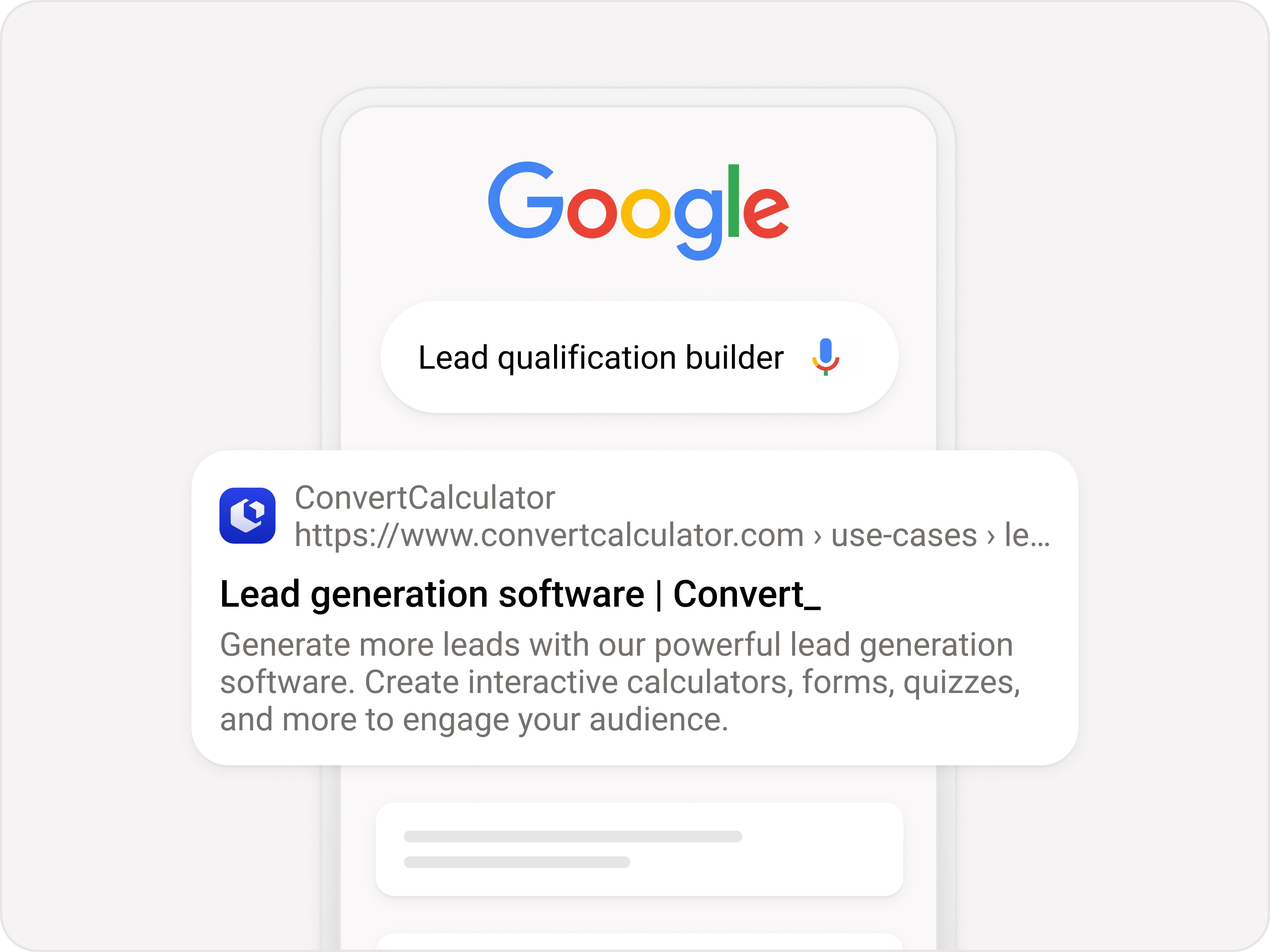
Outbound leads
Outbound lead generation is a proactive approach. You reach out to potential customers and initiate conversations.
Unlike inbound lead generation, outbound lead generation involves actively seeking out prospects. They may not be searching for a solution but could still benefit from your product.
Some outbound techniques are:
Cold calling
Email marketing
Targeted advertising
Cold calling
Cold calling is common for outbound lead generation. You contact potential customers by phone, introducing them to your product and gauging their interest.
Email marketing
Email marketing is another effective strategy for outbound lead generation. You send targeted emails to a list of potential customers, introducing your business and highlighting its benefits.
Personalization and segmentation are key to successful email marketing campaigns. You tailor your messages to specific audiences and increase the chances of conversion.
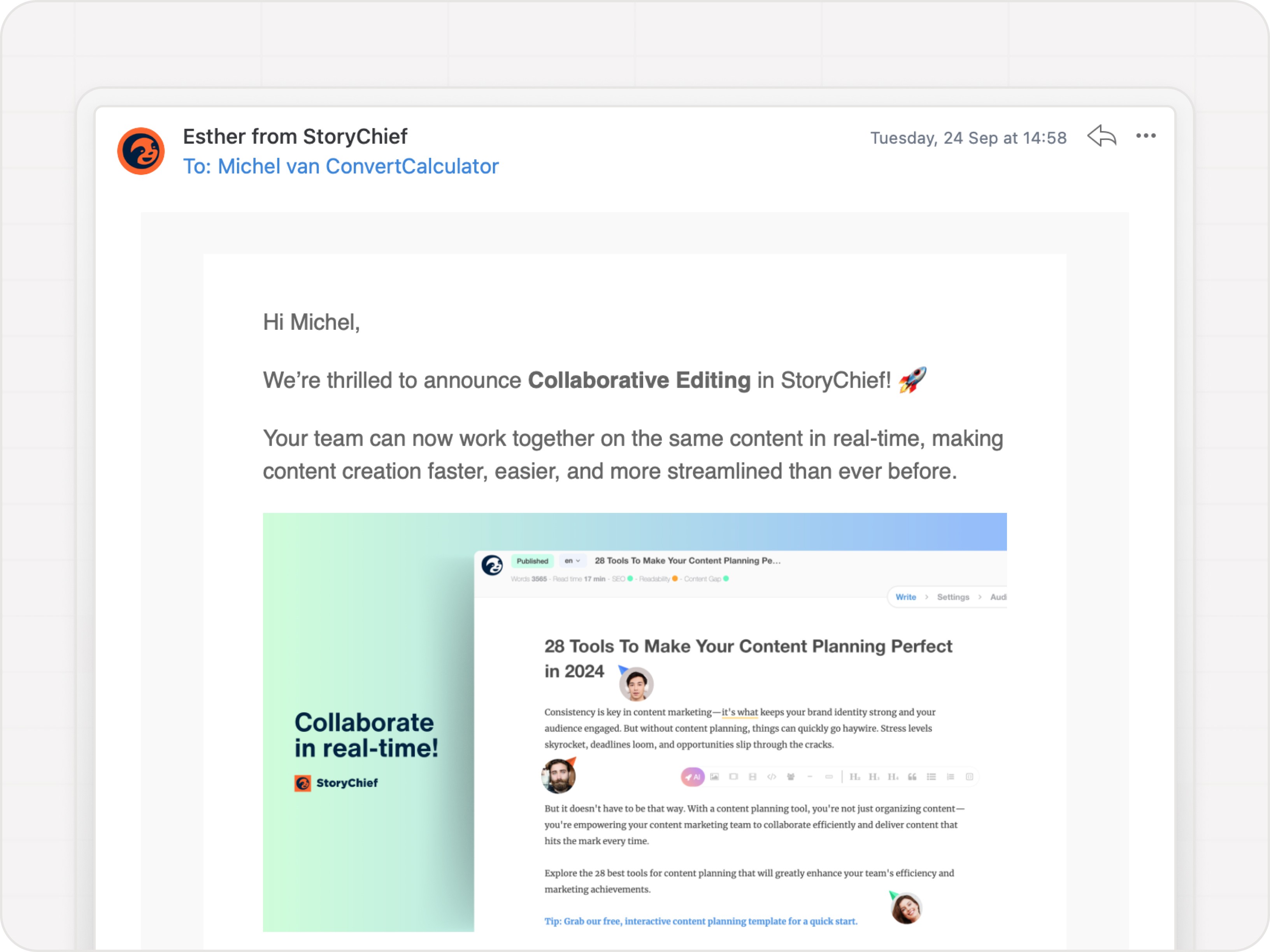
Targeted Advertising
Another popular method of outbound lead generation is targeted advertising. You reach a wide audience and generate interest with ads on social media, search engines, and websites.
Outbound lead generation requires a proactive mindset and a well-defined target audience. Done right, it can initiate conversations, build relationships, and ultimately convert leads into customers.
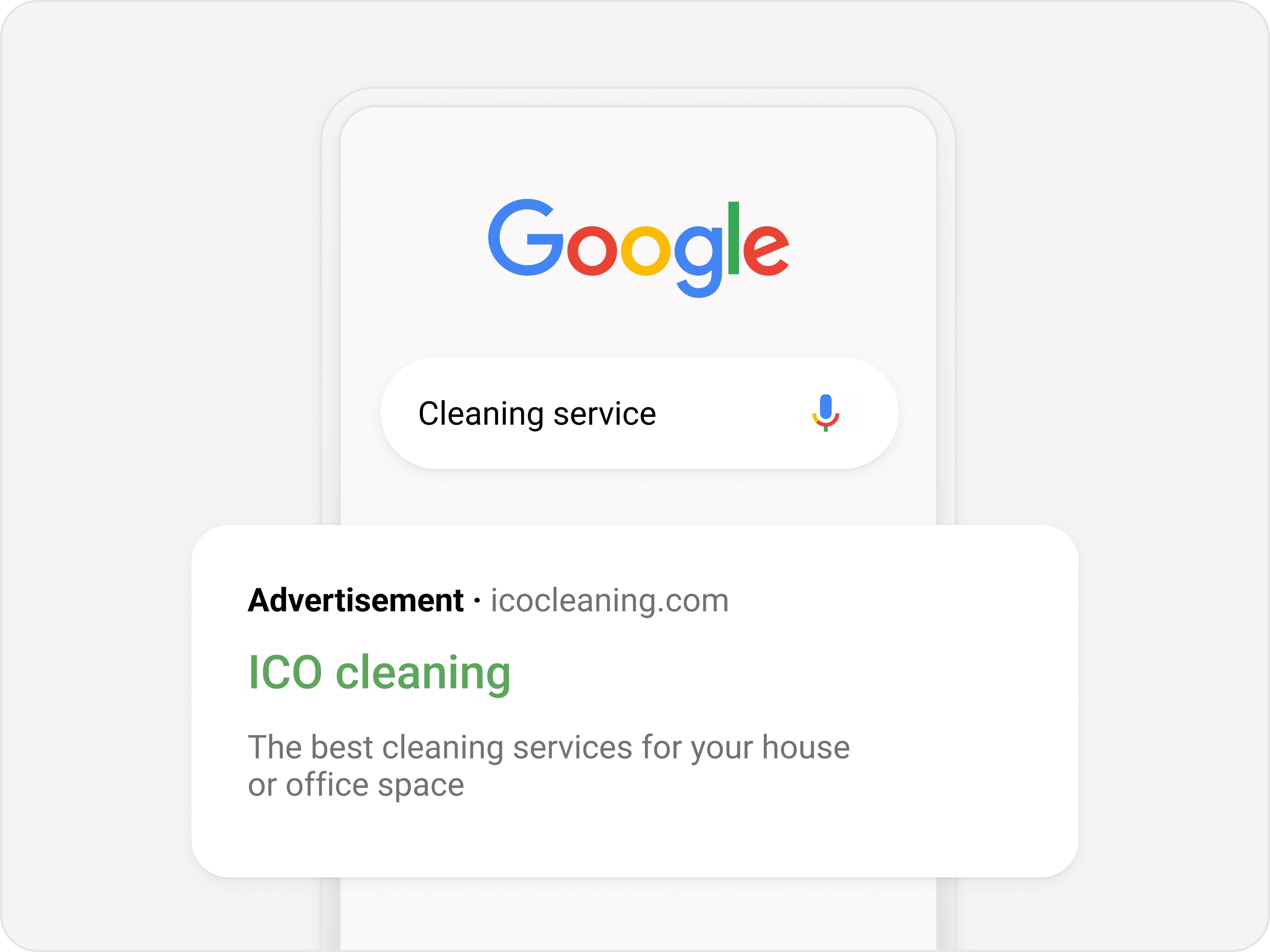
The lead generation process
With a better understanding of lead generation, we can look at the lead generation process. This involves getting potential customers to give you their information in exchange for an offer.
The offer could be the following:
Results of a finance calculator
Outcome of a test
Free price quote
A template
A course
The offer entices the prospect to hand over their contact details. It allows you to follow up and nurture the lead.
The lead generation process has four steps:
A potential customer discovers your business from your marketing efforts - through social media, your blog, or a search engine like Google.
The prospect acts on your offer and clicks the call to action (CTA) - a button on your website, for instance.
Your CTA takes them to the next stage of the customer journey - for example, a landing page with a sustainability calculator.
The potential customer inputs data into the calculator, then gives you an email address for the results - you get a new lead.
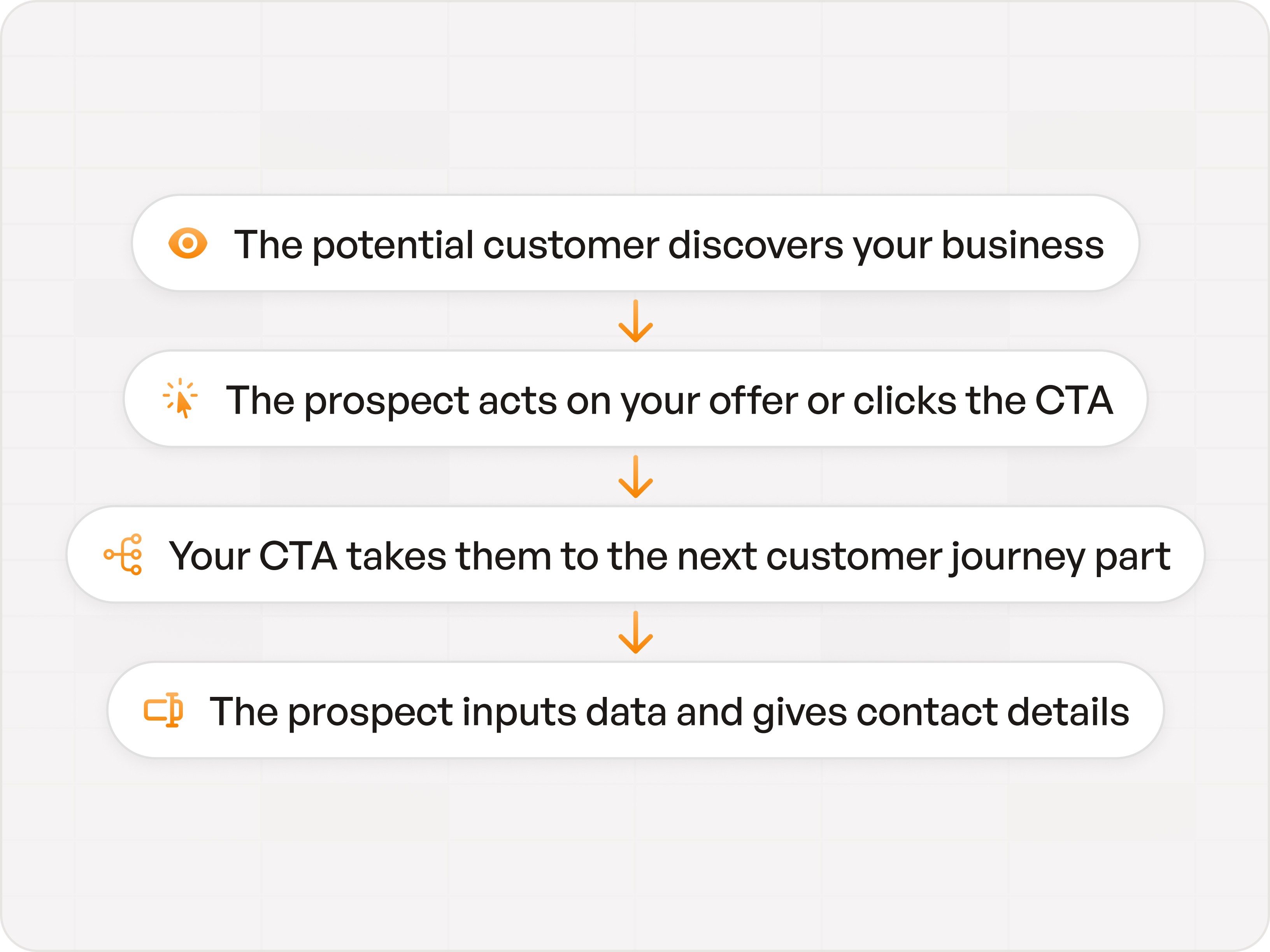
Our lead generation forms are outstanding for capturing leads. These forms are simple to set up, create an engaging experience for website visitors, and make it easier for them to part with their contact details. Check out this example:
RZF9egLas6eNbbA9g
The best part is you can get started for free.
Why lead generation is important
Lead generation is important for five reasons.
Fuels the sales pipeline
Increases brand visibility
Helps you to maximize ROI
Offers insights into your audience
Builds trust and credibility in your business
1 - Fuels the sales pipeline
Lead generation should fuel your sales pipeline and provide a consistent stream of potential customers. Without an efficient lead generation process, you risk relying solely on existing customers or sporadic referrals, which may not be enough to sustain growth and achieve your objectives.
2 - Increase brand visibility
The importance of lead generation goes beyond maintaining a steady flow of prospects. It expands your reach and increases brand visibility. Seeking out and attracting leads means you tap into new markets you may not have reached otherwise.
3 - Helps you to maximize ROI
Effective lead generation allows you to focus on the most promising leads. Instead of wasting time and resources on unqualified prospects, you can prioritize warm leads. This targeted approach ensures you allocate resources wisely and maximize return on investment (ROI).
4 - Offers insights into your audience
Lead generation gives you valuable insights into your target audience. Gather information about your prospects' preferences, needs, and pain points with interactive calculators, quizzes, surveys, and estimate forms. And use this data to tailor marketing campaigns, product offerings, and experiences to your customers' needs.
5 - Builds trust and credibility in your business
Finally, lead generation fosters trust and credibility between you and your potential customers. Providing valuable content, resources, and solutions to your target audience establishes you as an industry expert.Not only does this attract leads, but it also builds trust and loyalty. That increases the likelihood of converting leads into long-term customers.
The lead qualification process
The lead qualification process involves qualifying the leads you generate. You get leads through your various marketing channels and you need to qualify them. It helps you discover who is receptive to selling and who needs more nurturing.
Types of leads
Before running leads through a lead-qualification framework, it's helpful to understand the different types of leads. These are categorized into several broad categories:
Unqualified Leads: You haven't nurtured these leads enough to begin the selling process. They'll likely be "cold" to your communications.
Marketing Qualified Leads (MQLs): These leads have shown interest in your marketing efforts. Maybe they've completed a self-qualification form like a ROI savings calculator. But they're not ready for a sales call and need further nurturing.
Sales Qualified Leads (SQLs): SQLs are leads deemed ready for direct sales engagement based on specific criteria or actions they have taken.
Product Qualified Leads (PQLs): They've shown a strong interest in a specific product, like subscribing to a free trial, and are likely further along in their buyer's journey.
Service Qualified Leads: These leads have interacted with your services and have informed your service team of their interest in paying for your services.
Understanding the different types of leads helps you tailor lead qualification efforts based on the needs of each lead. You run them through a lead-qualification framework and ask qualifying questions.
This lets you divide leads into qualified and disqualified. You feed the qualified leads into the sales process but need to nurture the disqualified ones. These leads aren't ready to buy, so you need to "warm" them up to buy later.
To divide your leads, you must ask qualifying questions. Let's quickly put the qualified lead types side by side:
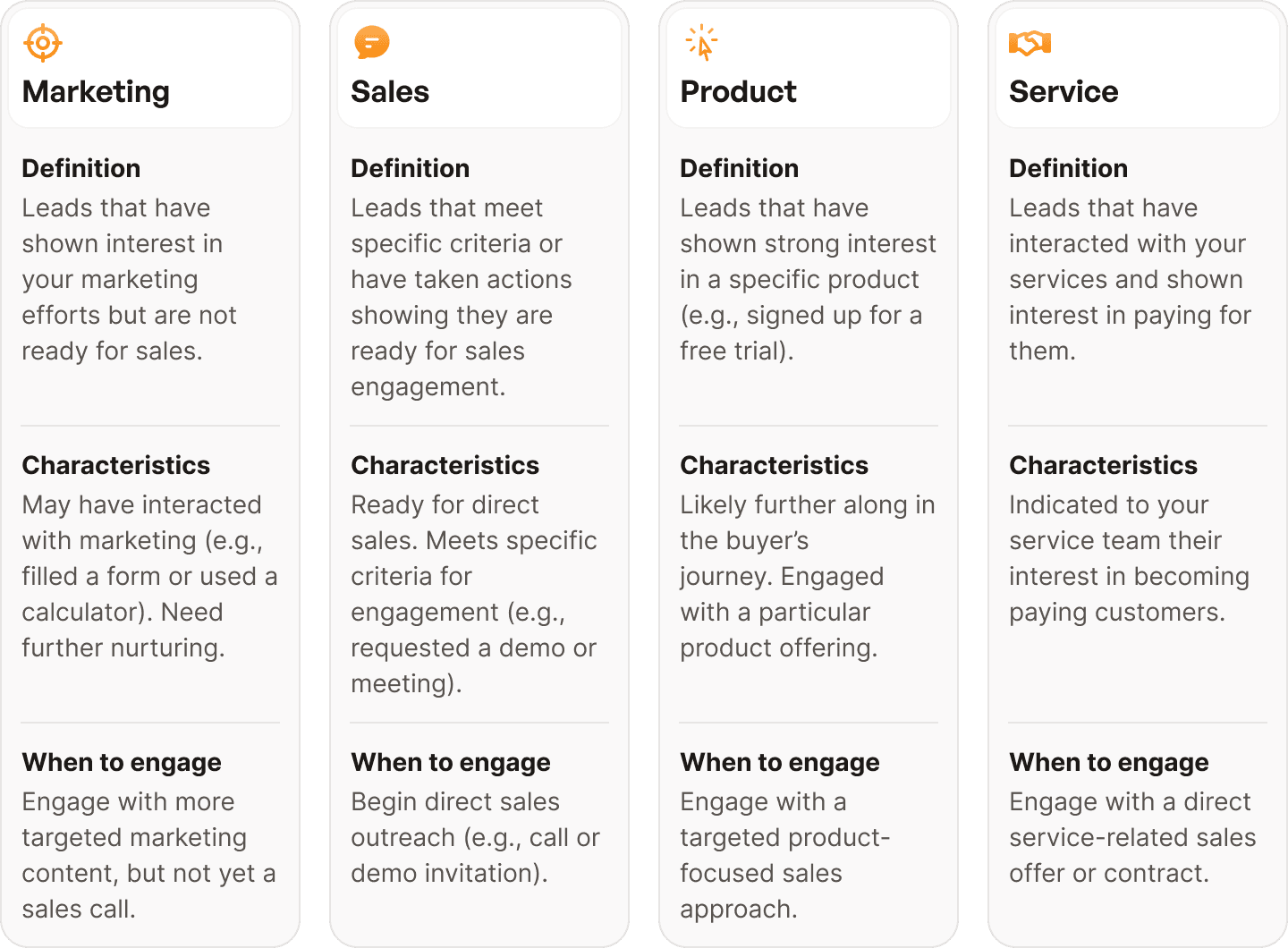
What is a qualifying question?
A qualifying question helps you discover a lead's fit for certain categories related to the product.
Some categories could be:
Demand - do they need it?
Urgency - how crucial is it?
Budget - can they afford it?
It's a good idea to avoid close-ended questions when qualifying leads. For instance, "Does this product help you solve a problem?" prompts a yes or no answer.
Asking open-ended questions is your best bet. For example, "What problems does this product help you solve?" guides leads away from yes or no answers.
It prompts them to give you more details. The more detailed the response, the better it is for your lead qualification process.
Some other questions you might ask are:
What products have you previously used to solve these problems?
Why did these solutions not meet your needs?
What is your priority when it comes to solving these problems?
What does your budget look like for finding these solutions?
You get the idea. Once you get leads to answer qualifying questions, you then qualify or disqualify them.
What is a qualified prospect?
A qualified prospect has undergone your lead qualification process and is the right fit for your services. These prospects align with your target market and demonstrate a high likelihood of converting into paying customers.
Qualified prospects are valuable assets for you. They already meet your buying criteria and will be easier to convert into customers.
Qualified prospects share these characteristics:
A budget
Clear needs
Purchase power
A deadline or strict timeline
A mutually beneficial relationship
5 Lead qualification frameworks
There are several lead qualification frameworks you can use to assess and categorize leads. Here are five popular frameworks:
1 - BANT (Budget, Authority, Need, Timeline)
The BANT framework evaluates leads based on their budget, decision-making authority, need for the product or service, and the timeline for buying. It helps you decide whether a lead is qualified and worth pursuing for further engagement.
Budget - Can the prospect afford to buy?
Authority - Do they have the authority to sign off on a purchase?
Need - Is there a pain point you can solve?
Timeline - When do they plan to buy?
2 - CHAMP (Challenges, Authority, Money, Prioritization)
The CHAMP framework revolves around understanding the lead's challenges or pain points, their decision-making authority, available budget, and prioritization of the problem they want to solve.
This framework helps businesses identify leads actively seeking solutions and have the means and urgency to purchase.
3 - GPCTBA/C&I (Goals, Plans, Challenges, Timeline, Budget, Authority, Negative Consequences, Positive Implications)
This comprehensive framework goes beyond just qualifying leads and aims to understand their goals, plans, challenges, timeline, budget, authority, negative consequences of inaction, and the positive implications of taking action. You can gain a holistic understanding of leads and tailor your approach accordingly with this framework.
Goals - What goal is the lead shooting for?
Plans - What is the lead doing to reach this goal?
Challenges - Is there a major challenge they're facing?
Timeline - When do they need to achieve the goal?
Budget - Can the lead afford your solution?
Authority - Are they in a position to make purchase decisions?
Negative Consequences - What is the downside to failing to reach the goal?
Positive Implications - What is the upside of reaching the goal?
4 - MEDDIC (Metrics, Economic Buyer, Decision Criteria, Decision Process, Identify Pain, Champion)
The MEDDIC framework focuses on evaluating the metrics, identifying the economic buyer, understanding decision criteria, examining the decision-making process, pinpointing pain points, and nurturing a champion. Considering these factors helps you ascertain lead quality and the likelihood of conversion
Metrics - What is the economic impact of the solution?
Economic Buyer - Who has profit and loss responsibility for this?
Decision Criteria - What are the technical, vendor, and financial criteria?
Decision Process - Then what happens?
Define validation and approval?
Identify Pain - What are the primary business objectives?
Champion - Who will sell on your behalf (champion your product)?
This detailed framework suits businesses doing big deals.
5 - ANUM (Authority, Need, Urgency, Money)
The ANUM framework emphasizes the authority of the lead, their need for the product, the urgency of their problem, and their available budget. This framework provides a quick and straightforward evaluation of leads, helping you prioritize your efforts and resources.
This framework is similar to BANT. But it prioritizes identifying whether you're speaking with a decision-maker.
Conclusion
A robust lead qualification process ensures you focus your efforts on prospects with the highest potential for conversion.
Understanding the different types of leads, asking qualifying questions, and utilizing lead qualification frameworks means you can efficiently identify qualified prospects and streamline your sales and marketing efforts.
Remember, lead qualification is an ongoing process. You must continuously analyze and refine the process to adapt to market and target audience changes.
Doing this will enhance your sales performance, improve customer acquisition, and drive sustainable growth.
To run the lead qualification process, you need a pool of leads. Our lead capture forms help you gather potential customers for qualification.
Lead qualification plays a crucial role in the success and efficiency of your lead generation efforts. You need to assess and categorize leads to determine a prospect's level of interest and readiness to buy.
Qualifying leads helps you boost your conversion rates. Because high-quality leads have already shown interest in your business they are easier to convert into customers.
Key Points:
A lead is a potential customer interested in your business.
Lead generation attracts potential customers to your business.
You can generate leads through inbound and outbound methods.
Lead generation involves getting your business noticed, prompting people to click a call to action, taking them to the next stage of the customer journey, and persuading them to exchange their contact details for a resource.
Lead generation fuels sales, increases visibility, helps you maximize ROI, creates audience insights, and builds credibility.
The lead qualification process helps you divide leads into qualified and disqualified.
You categorize leads by asking qualifying questions.
Lead qualification frameworks help you to qualify leads and increase conversions.
We cover these points in more detail throughout this article.
Let's dive into your guide to the lead qualification process in 2023.
What is a lead?
In a nutshell, a lead is a potential customer who shows interest in your product. People providing contact information such as name, email address, or phone number indicate this interest.
But a lead goes beyond just contact information. It's an opportunity for you to connect with a potential customer and nurture the relationship into a sale.
A lead is like a seed that has the potential to grow into a fruitful business relationship.

When a prospect expresses interest in your service, they have a problem they think you can solve. The initial expression of interest is the first step in the customer journey, and you must capitalize on this opportunity.
You can engage in the lead qualification processes once you gather leads. It determines the level of interest and the likelihood of conversion.
That involves assessing the lead's demographics, behavior, and engagement with your business. Understanding this information lets you tailor your approach to increase the chances of conversion.
Not all leads are created equal, though. Some will be more qualified and ready to buy. You must nurture and educate others before they're ready to convert. Lead qualification helps you prioritize your efforts and allocate resources effectively.
Leads have various sources, including:
Referrals
Website inquiries
Social media interactions
Each source may require a different approach and level of engagement.
Referral leads have a higher level of trust and interest in your business. Those visiting your website through a search engine will initially have less trust.
What is lead generation?
Lead generation is identifying and attracting potential customers for your business. It involves various marketing tactics and strategies to capture attention and interest in your products.
Lead generation is an essential aspect of any successful marketing campaign. With the increasing reliance on online platforms, you need innovative ways to generate leads and convert them into paying customers.
Lead generation can be divided into two types: Inbound and outbound.
Inbound leads
Inbound lead generation is a powerful strategy for attracting potential customers. This customer-centric approach focuses on understanding the needs and pain points of the target audience. It's effective because you connect with potential customers actively seeking solutions.
Content marketing is one of the most common ways to generate inbound leads. You can attract prospects and establish yourself as an industry expert through valuable and relevant content.
This can include:
Social media posts
Blog articles
SEO
Social media
It's no secret that social media is a powerful tool for lead generation. Creating valuable content on platforms like Facebook, Instagram, Twitter, and LinkedIn builds brand awareness, fosters relationships, and drives traffic to your website.

Blogging
Another tactic for inbound lead generation is blogging. You build industry authority by publishing valuable articles. This attracts the attention of your target audience and establishes credibility.

SEO
Search engine optimization (SEO) is another effective strategy. Optimizing your website for search engines increases your visibility and attracts organic traffic. Leads generated organically are more likely to convert to customers.
Inbound lead generation is a customer-centric strategy. You connect with prospects, address their pain points, and ultimately generate leads through social media, blogging, and SEO. This approach often leads to long-term customer relationships.

Outbound leads
Outbound lead generation is a proactive approach. You reach out to potential customers and initiate conversations.
Unlike inbound lead generation, outbound lead generation involves actively seeking out prospects. They may not be searching for a solution but could still benefit from your product.
Some outbound techniques are:
Cold calling
Email marketing
Targeted advertising
Cold calling
Cold calling is common for outbound lead generation. You contact potential customers by phone, introducing them to your product and gauging their interest.
Email marketing
Email marketing is another effective strategy for outbound lead generation. You send targeted emails to a list of potential customers, introducing your business and highlighting its benefits.
Personalization and segmentation are key to successful email marketing campaigns. You tailor your messages to specific audiences and increase the chances of conversion.

Targeted Advertising
Another popular method of outbound lead generation is targeted advertising. You reach a wide audience and generate interest with ads on social media, search engines, and websites.
Outbound lead generation requires a proactive mindset and a well-defined target audience. Done right, it can initiate conversations, build relationships, and ultimately convert leads into customers.

The lead generation process
With a better understanding of lead generation, we can look at the lead generation process. This involves getting potential customers to give you their information in exchange for an offer.
The offer could be the following:
Results of a finance calculator
Outcome of a test
Free price quote
A template
A course
The offer entices the prospect to hand over their contact details. It allows you to follow up and nurture the lead.
The lead generation process has four steps:
A potential customer discovers your business from your marketing efforts - through social media, your blog, or a search engine like Google.
The prospect acts on your offer and clicks the call to action (CTA) - a button on your website, for instance.
Your CTA takes them to the next stage of the customer journey - for example, a landing page with a sustainability calculator.
The potential customer inputs data into the calculator, then gives you an email address for the results - you get a new lead.

Our lead generation forms are outstanding for capturing leads. These forms are simple to set up, create an engaging experience for website visitors, and make it easier for them to part with their contact details. Check out this example:
RZF9egLas6eNbbA9g
The best part is you can get started for free.
Why lead generation is important
Lead generation is important for five reasons.
Fuels the sales pipeline
Increases brand visibility
Helps you to maximize ROI
Offers insights into your audience
Builds trust and credibility in your business
1 - Fuels the sales pipeline
Lead generation should fuel your sales pipeline and provide a consistent stream of potential customers. Without an efficient lead generation process, you risk relying solely on existing customers or sporadic referrals, which may not be enough to sustain growth and achieve your objectives.
2 - Increase brand visibility
The importance of lead generation goes beyond maintaining a steady flow of prospects. It expands your reach and increases brand visibility. Seeking out and attracting leads means you tap into new markets you may not have reached otherwise.
3 - Helps you to maximize ROI
Effective lead generation allows you to focus on the most promising leads. Instead of wasting time and resources on unqualified prospects, you can prioritize warm leads. This targeted approach ensures you allocate resources wisely and maximize return on investment (ROI).
4 - Offers insights into your audience
Lead generation gives you valuable insights into your target audience. Gather information about your prospects' preferences, needs, and pain points with interactive calculators, quizzes, surveys, and estimate forms. And use this data to tailor marketing campaigns, product offerings, and experiences to your customers' needs.
5 - Builds trust and credibility in your business
Finally, lead generation fosters trust and credibility between you and your potential customers. Providing valuable content, resources, and solutions to your target audience establishes you as an industry expert.Not only does this attract leads, but it also builds trust and loyalty. That increases the likelihood of converting leads into long-term customers.
The lead qualification process
The lead qualification process involves qualifying the leads you generate. You get leads through your various marketing channels and you need to qualify them. It helps you discover who is receptive to selling and who needs more nurturing.
Types of leads
Before running leads through a lead-qualification framework, it's helpful to understand the different types of leads. These are categorized into several broad categories:
Unqualified Leads: You haven't nurtured these leads enough to begin the selling process. They'll likely be "cold" to your communications.
Marketing Qualified Leads (MQLs): These leads have shown interest in your marketing efforts. Maybe they've completed a self-qualification form like a ROI savings calculator. But they're not ready for a sales call and need further nurturing.
Sales Qualified Leads (SQLs): SQLs are leads deemed ready for direct sales engagement based on specific criteria or actions they have taken.
Product Qualified Leads (PQLs): They've shown a strong interest in a specific product, like subscribing to a free trial, and are likely further along in their buyer's journey.
Service Qualified Leads: These leads have interacted with your services and have informed your service team of their interest in paying for your services.
Understanding the different types of leads helps you tailor lead qualification efforts based on the needs of each lead. You run them through a lead-qualification framework and ask qualifying questions.
This lets you divide leads into qualified and disqualified. You feed the qualified leads into the sales process but need to nurture the disqualified ones. These leads aren't ready to buy, so you need to "warm" them up to buy later.
To divide your leads, you must ask qualifying questions. Let's quickly put the qualified lead types side by side:

What is a qualifying question?
A qualifying question helps you discover a lead's fit for certain categories related to the product.
Some categories could be:
Demand - do they need it?
Urgency - how crucial is it?
Budget - can they afford it?
It's a good idea to avoid close-ended questions when qualifying leads. For instance, "Does this product help you solve a problem?" prompts a yes or no answer.
Asking open-ended questions is your best bet. For example, "What problems does this product help you solve?" guides leads away from yes or no answers.
It prompts them to give you more details. The more detailed the response, the better it is for your lead qualification process.
Some other questions you might ask are:
What products have you previously used to solve these problems?
Why did these solutions not meet your needs?
What is your priority when it comes to solving these problems?
What does your budget look like for finding these solutions?
You get the idea. Once you get leads to answer qualifying questions, you then qualify or disqualify them.
What is a qualified prospect?
A qualified prospect has undergone your lead qualification process and is the right fit for your services. These prospects align with your target market and demonstrate a high likelihood of converting into paying customers.
Qualified prospects are valuable assets for you. They already meet your buying criteria and will be easier to convert into customers.
Qualified prospects share these characteristics:
A budget
Clear needs
Purchase power
A deadline or strict timeline
A mutually beneficial relationship
5 Lead qualification frameworks
There are several lead qualification frameworks you can use to assess and categorize leads. Here are five popular frameworks:
1 - BANT (Budget, Authority, Need, Timeline)
The BANT framework evaluates leads based on their budget, decision-making authority, need for the product or service, and the timeline for buying. It helps you decide whether a lead is qualified and worth pursuing for further engagement.
Budget - Can the prospect afford to buy?
Authority - Do they have the authority to sign off on a purchase?
Need - Is there a pain point you can solve?
Timeline - When do they plan to buy?
2 - CHAMP (Challenges, Authority, Money, Prioritization)
The CHAMP framework revolves around understanding the lead's challenges or pain points, their decision-making authority, available budget, and prioritization of the problem they want to solve.
This framework helps businesses identify leads actively seeking solutions and have the means and urgency to purchase.
3 - GPCTBA/C&I (Goals, Plans, Challenges, Timeline, Budget, Authority, Negative Consequences, Positive Implications)
This comprehensive framework goes beyond just qualifying leads and aims to understand their goals, plans, challenges, timeline, budget, authority, negative consequences of inaction, and the positive implications of taking action. You can gain a holistic understanding of leads and tailor your approach accordingly with this framework.
Goals - What goal is the lead shooting for?
Plans - What is the lead doing to reach this goal?
Challenges - Is there a major challenge they're facing?
Timeline - When do they need to achieve the goal?
Budget - Can the lead afford your solution?
Authority - Are they in a position to make purchase decisions?
Negative Consequences - What is the downside to failing to reach the goal?
Positive Implications - What is the upside of reaching the goal?
4 - MEDDIC (Metrics, Economic Buyer, Decision Criteria, Decision Process, Identify Pain, Champion)
The MEDDIC framework focuses on evaluating the metrics, identifying the economic buyer, understanding decision criteria, examining the decision-making process, pinpointing pain points, and nurturing a champion. Considering these factors helps you ascertain lead quality and the likelihood of conversion
Metrics - What is the economic impact of the solution?
Economic Buyer - Who has profit and loss responsibility for this?
Decision Criteria - What are the technical, vendor, and financial criteria?
Decision Process - Then what happens?
Define validation and approval?
Identify Pain - What are the primary business objectives?
Champion - Who will sell on your behalf (champion your product)?
This detailed framework suits businesses doing big deals.
5 - ANUM (Authority, Need, Urgency, Money)
The ANUM framework emphasizes the authority of the lead, their need for the product, the urgency of their problem, and their available budget. This framework provides a quick and straightforward evaluation of leads, helping you prioritize your efforts and resources.
This framework is similar to BANT. But it prioritizes identifying whether you're speaking with a decision-maker.
Conclusion
A robust lead qualification process ensures you focus your efforts on prospects with the highest potential for conversion.
Understanding the different types of leads, asking qualifying questions, and utilizing lead qualification frameworks means you can efficiently identify qualified prospects and streamline your sales and marketing efforts.
Remember, lead qualification is an ongoing process. You must continuously analyze and refine the process to adapt to market and target audience changes.
Doing this will enhance your sales performance, improve customer acquisition, and drive sustainable growth.
To run the lead qualification process, you need a pool of leads. Our lead capture forms help you gather potential customers for qualification.
Lead qualification plays a crucial role in the success and efficiency of your lead generation efforts. You need to assess and categorize leads to determine a prospect's level of interest and readiness to buy.
Qualifying leads helps you boost your conversion rates. Because high-quality leads have already shown interest in your business they are easier to convert into customers.
Key Points:
A lead is a potential customer interested in your business.
Lead generation attracts potential customers to your business.
You can generate leads through inbound and outbound methods.
Lead generation involves getting your business noticed, prompting people to click a call to action, taking them to the next stage of the customer journey, and persuading them to exchange their contact details for a resource.
Lead generation fuels sales, increases visibility, helps you maximize ROI, creates audience insights, and builds credibility.
The lead qualification process helps you divide leads into qualified and disqualified.
You categorize leads by asking qualifying questions.
Lead qualification frameworks help you to qualify leads and increase conversions.
We cover these points in more detail throughout this article.
Let's dive into your guide to the lead qualification process in 2023.
What is a lead?
In a nutshell, a lead is a potential customer who shows interest in your product. People providing contact information such as name, email address, or phone number indicate this interest.
But a lead goes beyond just contact information. It's an opportunity for you to connect with a potential customer and nurture the relationship into a sale.
A lead is like a seed that has the potential to grow into a fruitful business relationship.

When a prospect expresses interest in your service, they have a problem they think you can solve. The initial expression of interest is the first step in the customer journey, and you must capitalize on this opportunity.
You can engage in the lead qualification processes once you gather leads. It determines the level of interest and the likelihood of conversion.
That involves assessing the lead's demographics, behavior, and engagement with your business. Understanding this information lets you tailor your approach to increase the chances of conversion.
Not all leads are created equal, though. Some will be more qualified and ready to buy. You must nurture and educate others before they're ready to convert. Lead qualification helps you prioritize your efforts and allocate resources effectively.
Leads have various sources, including:
Referrals
Website inquiries
Social media interactions
Each source may require a different approach and level of engagement.
Referral leads have a higher level of trust and interest in your business. Those visiting your website through a search engine will initially have less trust.
What is lead generation?
Lead generation is identifying and attracting potential customers for your business. It involves various marketing tactics and strategies to capture attention and interest in your products.
Lead generation is an essential aspect of any successful marketing campaign. With the increasing reliance on online platforms, you need innovative ways to generate leads and convert them into paying customers.
Lead generation can be divided into two types: Inbound and outbound.
Inbound leads
Inbound lead generation is a powerful strategy for attracting potential customers. This customer-centric approach focuses on understanding the needs and pain points of the target audience. It's effective because you connect with potential customers actively seeking solutions.
Content marketing is one of the most common ways to generate inbound leads. You can attract prospects and establish yourself as an industry expert through valuable and relevant content.
This can include:
Social media posts
Blog articles
SEO
Social media
It's no secret that social media is a powerful tool for lead generation. Creating valuable content on platforms like Facebook, Instagram, Twitter, and LinkedIn builds brand awareness, fosters relationships, and drives traffic to your website.

Blogging
Another tactic for inbound lead generation is blogging. You build industry authority by publishing valuable articles. This attracts the attention of your target audience and establishes credibility.

SEO
Search engine optimization (SEO) is another effective strategy. Optimizing your website for search engines increases your visibility and attracts organic traffic. Leads generated organically are more likely to convert to customers.
Inbound lead generation is a customer-centric strategy. You connect with prospects, address their pain points, and ultimately generate leads through social media, blogging, and SEO. This approach often leads to long-term customer relationships.

Outbound leads
Outbound lead generation is a proactive approach. You reach out to potential customers and initiate conversations.
Unlike inbound lead generation, outbound lead generation involves actively seeking out prospects. They may not be searching for a solution but could still benefit from your product.
Some outbound techniques are:
Cold calling
Email marketing
Targeted advertising
Cold calling
Cold calling is common for outbound lead generation. You contact potential customers by phone, introducing them to your product and gauging their interest.
Email marketing
Email marketing is another effective strategy for outbound lead generation. You send targeted emails to a list of potential customers, introducing your business and highlighting its benefits.
Personalization and segmentation are key to successful email marketing campaigns. You tailor your messages to specific audiences and increase the chances of conversion.

Targeted Advertising
Another popular method of outbound lead generation is targeted advertising. You reach a wide audience and generate interest with ads on social media, search engines, and websites.
Outbound lead generation requires a proactive mindset and a well-defined target audience. Done right, it can initiate conversations, build relationships, and ultimately convert leads into customers.

The lead generation process
With a better understanding of lead generation, we can look at the lead generation process. This involves getting potential customers to give you their information in exchange for an offer.
The offer could be the following:
Results of a finance calculator
Outcome of a test
Free price quote
A template
A course
The offer entices the prospect to hand over their contact details. It allows you to follow up and nurture the lead.
The lead generation process has four steps:
A potential customer discovers your business from your marketing efforts - through social media, your blog, or a search engine like Google.
The prospect acts on your offer and clicks the call to action (CTA) - a button on your website, for instance.
Your CTA takes them to the next stage of the customer journey - for example, a landing page with a sustainability calculator.
The potential customer inputs data into the calculator, then gives you an email address for the results - you get a new lead.

Our lead generation forms are outstanding for capturing leads. These forms are simple to set up, create an engaging experience for website visitors, and make it easier for them to part with their contact details. Check out this example:
RZF9egLas6eNbbA9g
The best part is you can get started for free.
Why lead generation is important
Lead generation is important for five reasons.
Fuels the sales pipeline
Increases brand visibility
Helps you to maximize ROI
Offers insights into your audience
Builds trust and credibility in your business
1 - Fuels the sales pipeline
Lead generation should fuel your sales pipeline and provide a consistent stream of potential customers. Without an efficient lead generation process, you risk relying solely on existing customers or sporadic referrals, which may not be enough to sustain growth and achieve your objectives.
2 - Increase brand visibility
The importance of lead generation goes beyond maintaining a steady flow of prospects. It expands your reach and increases brand visibility. Seeking out and attracting leads means you tap into new markets you may not have reached otherwise.
3 - Helps you to maximize ROI
Effective lead generation allows you to focus on the most promising leads. Instead of wasting time and resources on unqualified prospects, you can prioritize warm leads. This targeted approach ensures you allocate resources wisely and maximize return on investment (ROI).
4 - Offers insights into your audience
Lead generation gives you valuable insights into your target audience. Gather information about your prospects' preferences, needs, and pain points with interactive calculators, quizzes, surveys, and estimate forms. And use this data to tailor marketing campaigns, product offerings, and experiences to your customers' needs.
5 - Builds trust and credibility in your business
Finally, lead generation fosters trust and credibility between you and your potential customers. Providing valuable content, resources, and solutions to your target audience establishes you as an industry expert.Not only does this attract leads, but it also builds trust and loyalty. That increases the likelihood of converting leads into long-term customers.
The lead qualification process
The lead qualification process involves qualifying the leads you generate. You get leads through your various marketing channels and you need to qualify them. It helps you discover who is receptive to selling and who needs more nurturing.
Types of leads
Before running leads through a lead-qualification framework, it's helpful to understand the different types of leads. These are categorized into several broad categories:
Unqualified Leads: You haven't nurtured these leads enough to begin the selling process. They'll likely be "cold" to your communications.
Marketing Qualified Leads (MQLs): These leads have shown interest in your marketing efforts. Maybe they've completed a self-qualification form like a ROI savings calculator. But they're not ready for a sales call and need further nurturing.
Sales Qualified Leads (SQLs): SQLs are leads deemed ready for direct sales engagement based on specific criteria or actions they have taken.
Product Qualified Leads (PQLs): They've shown a strong interest in a specific product, like subscribing to a free trial, and are likely further along in their buyer's journey.
Service Qualified Leads: These leads have interacted with your services and have informed your service team of their interest in paying for your services.
Understanding the different types of leads helps you tailor lead qualification efforts based on the needs of each lead. You run them through a lead-qualification framework and ask qualifying questions.
This lets you divide leads into qualified and disqualified. You feed the qualified leads into the sales process but need to nurture the disqualified ones. These leads aren't ready to buy, so you need to "warm" them up to buy later.
To divide your leads, you must ask qualifying questions. Let's quickly put the qualified lead types side by side:

What is a qualifying question?
A qualifying question helps you discover a lead's fit for certain categories related to the product.
Some categories could be:
Demand - do they need it?
Urgency - how crucial is it?
Budget - can they afford it?
It's a good idea to avoid close-ended questions when qualifying leads. For instance, "Does this product help you solve a problem?" prompts a yes or no answer.
Asking open-ended questions is your best bet. For example, "What problems does this product help you solve?" guides leads away from yes or no answers.
It prompts them to give you more details. The more detailed the response, the better it is for your lead qualification process.
Some other questions you might ask are:
What products have you previously used to solve these problems?
Why did these solutions not meet your needs?
What is your priority when it comes to solving these problems?
What does your budget look like for finding these solutions?
You get the idea. Once you get leads to answer qualifying questions, you then qualify or disqualify them.
What is a qualified prospect?
A qualified prospect has undergone your lead qualification process and is the right fit for your services. These prospects align with your target market and demonstrate a high likelihood of converting into paying customers.
Qualified prospects are valuable assets for you. They already meet your buying criteria and will be easier to convert into customers.
Qualified prospects share these characteristics:
A budget
Clear needs
Purchase power
A deadline or strict timeline
A mutually beneficial relationship
5 Lead qualification frameworks
There are several lead qualification frameworks you can use to assess and categorize leads. Here are five popular frameworks:
1 - BANT (Budget, Authority, Need, Timeline)
The BANT framework evaluates leads based on their budget, decision-making authority, need for the product or service, and the timeline for buying. It helps you decide whether a lead is qualified and worth pursuing for further engagement.
Budget - Can the prospect afford to buy?
Authority - Do they have the authority to sign off on a purchase?
Need - Is there a pain point you can solve?
Timeline - When do they plan to buy?
2 - CHAMP (Challenges, Authority, Money, Prioritization)
The CHAMP framework revolves around understanding the lead's challenges or pain points, their decision-making authority, available budget, and prioritization of the problem they want to solve.
This framework helps businesses identify leads actively seeking solutions and have the means and urgency to purchase.
3 - GPCTBA/C&I (Goals, Plans, Challenges, Timeline, Budget, Authority, Negative Consequences, Positive Implications)
This comprehensive framework goes beyond just qualifying leads and aims to understand their goals, plans, challenges, timeline, budget, authority, negative consequences of inaction, and the positive implications of taking action. You can gain a holistic understanding of leads and tailor your approach accordingly with this framework.
Goals - What goal is the lead shooting for?
Plans - What is the lead doing to reach this goal?
Challenges - Is there a major challenge they're facing?
Timeline - When do they need to achieve the goal?
Budget - Can the lead afford your solution?
Authority - Are they in a position to make purchase decisions?
Negative Consequences - What is the downside to failing to reach the goal?
Positive Implications - What is the upside of reaching the goal?
4 - MEDDIC (Metrics, Economic Buyer, Decision Criteria, Decision Process, Identify Pain, Champion)
The MEDDIC framework focuses on evaluating the metrics, identifying the economic buyer, understanding decision criteria, examining the decision-making process, pinpointing pain points, and nurturing a champion. Considering these factors helps you ascertain lead quality and the likelihood of conversion
Metrics - What is the economic impact of the solution?
Economic Buyer - Who has profit and loss responsibility for this?
Decision Criteria - What are the technical, vendor, and financial criteria?
Decision Process - Then what happens?
Define validation and approval?
Identify Pain - What are the primary business objectives?
Champion - Who will sell on your behalf (champion your product)?
This detailed framework suits businesses doing big deals.
5 - ANUM (Authority, Need, Urgency, Money)
The ANUM framework emphasizes the authority of the lead, their need for the product, the urgency of their problem, and their available budget. This framework provides a quick and straightforward evaluation of leads, helping you prioritize your efforts and resources.
This framework is similar to BANT. But it prioritizes identifying whether you're speaking with a decision-maker.
Conclusion
A robust lead qualification process ensures you focus your efforts on prospects with the highest potential for conversion.
Understanding the different types of leads, asking qualifying questions, and utilizing lead qualification frameworks means you can efficiently identify qualified prospects and streamline your sales and marketing efforts.
Remember, lead qualification is an ongoing process. You must continuously analyze and refine the process to adapt to market and target audience changes.
Doing this will enhance your sales performance, improve customer acquisition, and drive sustainable growth.
To run the lead qualification process, you need a pool of leads. Our lead capture forms help you gather potential customers for qualification.
Continue reading

More leads in less time_
Start building the future of your company, today
Create powerful on brand calculators, lead generation forms and apps that automate your marketing and sales processes
Start with a template
Find inspiration or customize an outstanding template, complete with functional formulas and flows to help you get started.
Let us build for you
We can build your calculator, and afterwards you can always make changes yourself. Our service starts at just $250.

More leads in less time_
Start building the future of your company, today
Create powerful on brand calculators, lead generation forms and apps that automate your marketing and sales processes
Start with a template
Find inspiration or customize an outstanding template, complete with functional formulas and flows to help you get started.
Let us build for you
We can build your calculator, and afterwards you can always make changes yourself. Our service starts at just $250.



